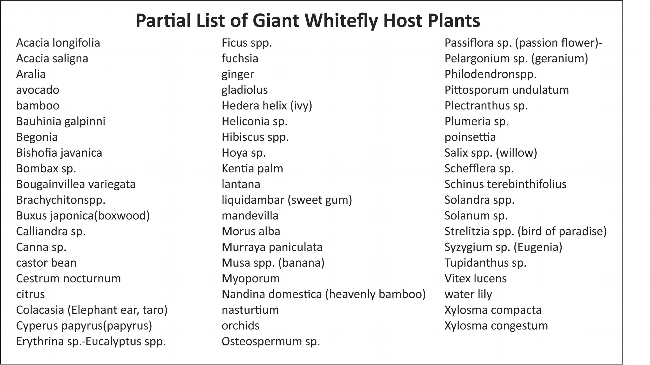
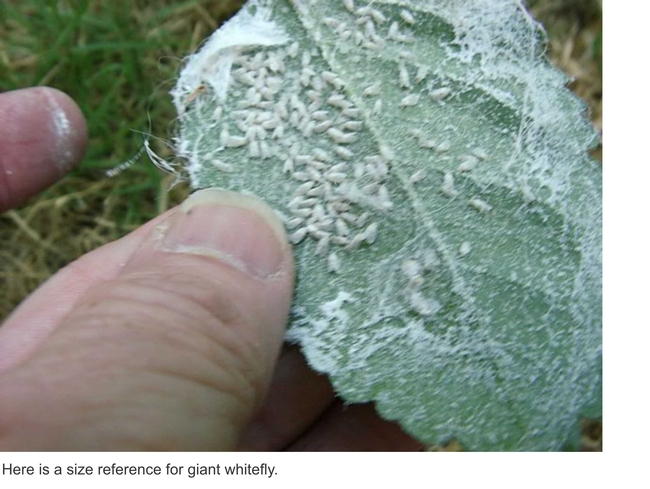
Giant whitefly can severely infest many ornamental plants. A recent call to the UC Master Gardeners of Napa County help desk has documented two serious infestations of giant whitefly, one on an unspecified tree and one on an ornamental plant.
Some plants are more affected by the giant whitefly than others. They include begonia, hibiscus, giant bird of paradise, mulberry and various vegetables. Certain varieties of citrus and avocado are also affected.
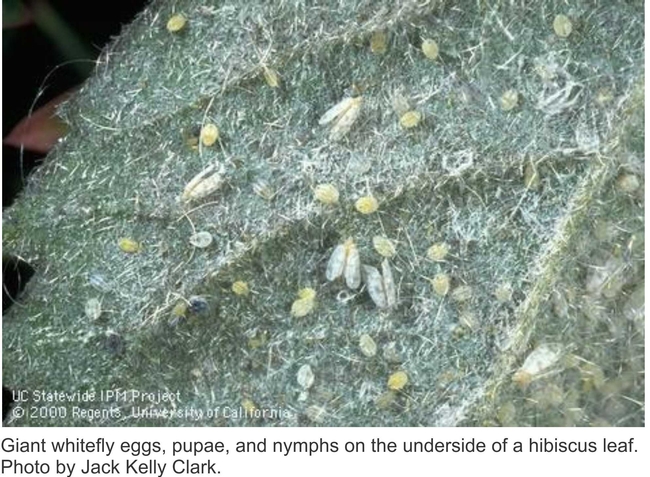
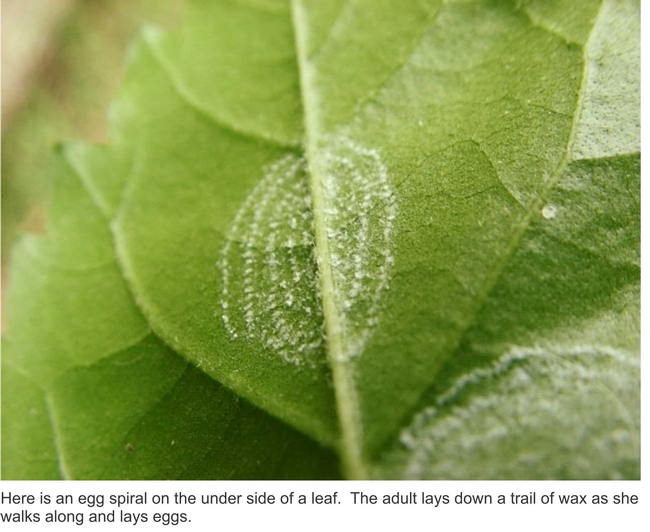
Sooty mold: During feeding, whiteflies excrete a sticky, sugary solution called honeydew that accumulates on leaves and fosters the growth of the black sooty mold fungus. This sooty mold is not only unattractive, it also reduces the photosynthetic (food-producing) abilities of the leaves.
MANAGEMENT Try to manage giant whiteflies in your landscape with an integrated program that includes removal of infested leaves and, if necessary, washing whiteflies off leaves with water. Insecticides are not generally recommended. A forceful stream of water (syringing) directed at colonies can be just as effective as insecticide sprays.
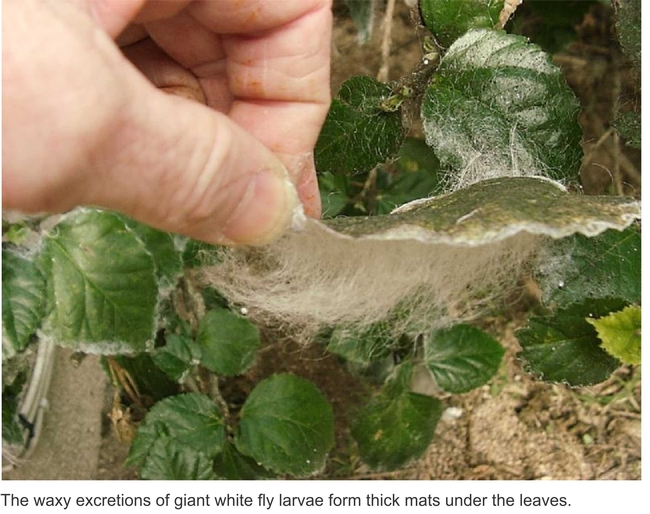
Syringing: With high whitefly populations, syringing (spraying with water) is recommended at least once a week. As populations decrease, intervals can be lengthened to once every 2 or 3 weeks. An additional advantage of syringing is improved plant appearance.
Biological Control Native insect predators such as green lacewings (Chrysopa and Chrysoperla spp.), syrphid fly larvae (also called hover flies), and lady beetle adults and larvae attack giant whitefly in California but do not provide adequate biological control. Parasitic wasps are often found parasitizing giant whitefly leaves. These tiny, stingless, parasitic wasps lay their eggs inside the whitefly larvae. When the wasp eggs hatch, their larvae feed on the giant whitefly larvae. The wasp then pupates and emerges, leaving behind either a hollow shell. While these parasites don't completely eradicate all of the whiteflies, they can dramatically reduce their numbers.
Natural enemies: The whitefly parasites mentioned above are being released by University of California and California state scientists. It is hoped that these parasites will permanently establish and distribute themselves throughout infested areas. Release off commercially available natural enemies by home gardeners should not be necessary..
Chemical Control Although some insecticides are registered to control giant whitefly either by foliar or soil application, their use is not recommended if parasites are present in the area. To determine if parasitic wasps are present, use a hand lens to examine several leaves containing whitefly nymphs. Look for a dark discoloration of the nymph or the tiny holes that parasites make when they emerge from the dead larva. If there is evidence of parasites, don't use insecticide treatments.
If you do choose to use insecticides, select least-toxic products such as insecticidal soaps or oils. Remember to follow label directions and spray undersides of leaves where whitefly colonies are found. WARNING ON THE USE OF CHEMICALS
___________________________
All photos courtesy of Kenneth Fuller except for photo showing eggs, pupae & nymphs from UC Statewide IPM
UC Master Gardeners of Napa County provide free home gardening advice. Visit, call or complete the
Plant Problem Diagnosis Sheet for assistance.
Monday, Wednesday and Friday, 9 a.m. to 12 p.m.
UC Cooperative Extension
1710 Soscol Avenue, Suite 4, Napa
(707) 253-4143
http://ucanr.edu/sites/ucmgnapa/
REFERENCES: UC IPM
http://www.ipm.ucdavis.edu/
Whitefly ID : http://www.ipm.ucdavis.edu/PMG/PESTNOTES/pn7401.html
Dreistadt, S. H., J. K. Clark, and M. L. Flint. 2001.
Integrated Pest Management for Floriculture and Nurseries. Oakland: Univ. Calif. Agric. Nat. Res. Publ. 3402.
PUBLICATION INFORMATION: Pest Notes: Giant Whitefly: Integrated Pest Management for Floriculture and Nurseries. Oakland: Univ. Calif. Agric. Nat. Res. Publ. 3402.
